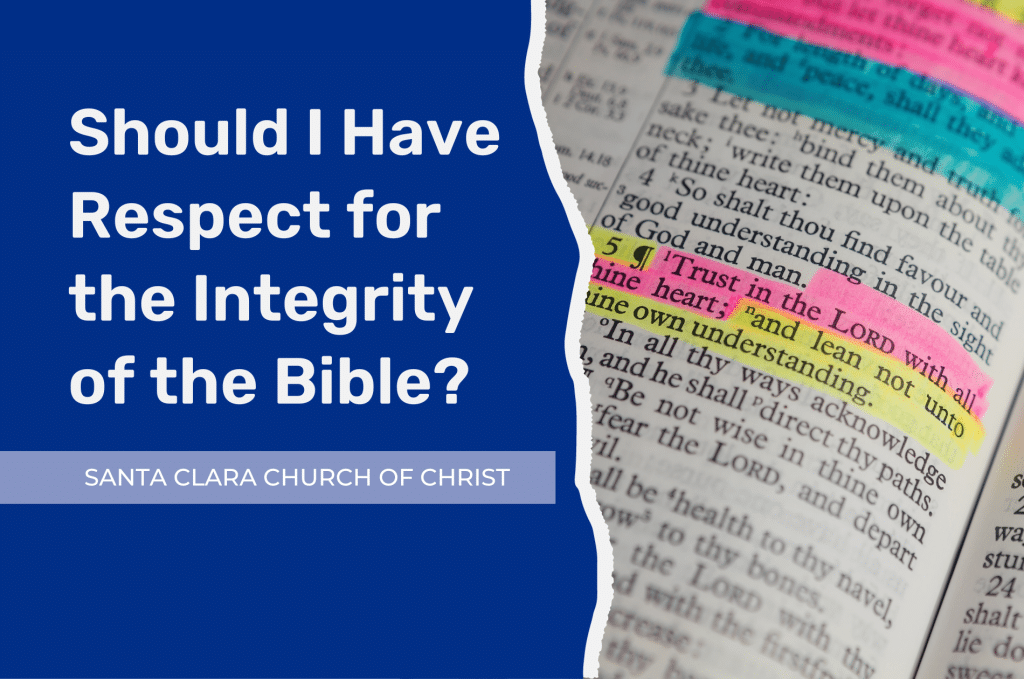Bart Ehrman of the University of North Carolina (Chapel Hill) has made a career out of bashing the integrity and divine origin of the Bible.
Although he is a respected scholar and gifted writer, he obviously has an axe to grind against the evangelical faith he once accepted as a youth.
Here are a few representative quotations from his Misquoting Jesus: the Story Behind Who Changed the Bible and Why (2005):
- “We have only error ridden copies, and the vast majority of these are centuries removed from the originals and different from them, evidently, in thousands of ways.” (p. 7)
- “There are more variations among our manuscripts than there are words in the New Testament.” (p. 90)
- “We don’t even have copies of the copies of the originals, or copies of the copies of the copies of the originals. What we have are copies made later – much later. In most instances, they are copies made many centuries later. And these copies all differ from one another, in many thousands of places.” (p. 10)
- “In the early Christian centuries, scribes were amateurs and as such were more inclined to alter the texts they copied…” (p. 98)
- “This was a human book from beginning to end.” (p. 11)
These statements are either outright false or misleading at best. To an audience that is congenial to any propaganda that attacks the Bible, these words are swallowed uncritically, and Ehrman is championed as something of a “leading authority.”
Should he be, though?
Honestly Assessing the Evidence
In spite of Ehrman’s skepticism, there is actually very good reason for confidence in the integrity of the transmission process for New Testament manuscripts.
The following points are a summary of the evidence:
- We admittedly do not have any original documents of New Testament books autographed by the apostles themselves, but there are approximately 5,800 Greek manuscript copies of portions of the text (and, in some cases, entire books).
- Compare this to other ancient works of literature:
- Virgil (70-19 BC) – 5 manuscripts
- Josephus (AD 37-100) – 9 complete manuscripts
- Tacitus (AD 59-129) – 33 manuscripts
- Julius Caesar’s Gallic Wars (51-46 BC) – 251 manuscripts dating between the ninth and fifteenth centuries
- Of the 5,800 Greek N.T. manuscripts in existence, over 100 papyri date from the 2nd and 3rd centuries. Some were copied within just a few decades of the original published documents!
- The New Testament, then, is by far the best-documented work of its kind in the entire world! No doubt there were thousands more that have not survived the rigors of decay or the flames of persecution.
- Most of the textual variants (discrepancies) involve minor issues such as word order, spelling, insignificant word variation, or conflation with a parallel account (especially common with Gospels). In some cases an over-zealous scribe sought to “correct” a perceived mistake in the manuscript from which he was copying.
- Both Philip Comfort and Edward Andrews, in the works cited below, make a strong case based on the physical evidence that the scribes in the earliest centuries were more faithful to their task than scribes of a later period.
- There is a question as to how to count the various discrepancies. The entire New Testament contains 138,020 words, but only “364 variants (1,092 words by our average) with which we have difficulty, a mere 10 of which involve great difficulty in deciding which reading to put in the text. Our average would make these variants 0.791 percent of the text…” (Andrews, p. 346).
A Perceived Weakness is Actually a Strength
But why, in a matter so important, would God allow any variations or human mistakes in the transmission of the text? Would not even a single scribal miscue taint the whole process and compromise our faith in the Word of God? How can we have confidence in what the original documents would have said?
What unbelievers interpret as a weakness is actually strength in disguise, illustrating once again that God’s ways are not man’s ways, and that God’s wisdom “surprises” man’s foolishness.
In much the same way that independent “local churches” spread over a wide area have advantages over a central bureaucracy, the dispersion of imperfect hand-copied manuscripts, distributed over a wide area, actually increases confidence in the original exemplars.
- With thousands of copies (in some cases not too many generations removed from the originals), there is less tendency to “idolize” a single manuscript.
- Enemies of the truth are not able to cast doubt on the whole message by discrediting just one document.
- Just as eyewitness divergence actually strengthens the case of overlapping testimony manuscript divergence enhances what they testify in common — which is essentially 99% of the message (with the remaining 1% not threatening any fundamental teaching).
- Destroy or burn one, and the core message will not be affected. There are still nearly 6,000 others in existence all over the world.
- Just as independent local churches, even with their imperfections and non-essential differences, are living examples of the same original blueprint, the surviving manuscripts point backward to an original that can be reconstructed with a high degree of confidence.
- Most of the divergences (manuscript variations) are readily identifiable as human mistakes, countered by the prevalence of uniform witnesses which are more trustworthy.
- The four or five different “manuscript families” show that when one early mistake was transcribed onto a manuscript that came to be trusted as a “parent copy” in a given region, scribes generally tried to faithfully reproduce their “best witness” to the original text – which underscores the general reliability of the entire transmission process.
In the Final Analysis…
Interestingly enough, Bart Ehrman’s mentor was world-renowned textual scholar, Bruce Metzger, who had a much healthier view of the integrity of the Biblical text than Ehrman does.
Yet Ehrman says of Metzger, “I have nothing but respect and admiration for him. In addition, even though we may disagree on important religious questions – he is a firmly committed Christian and I am not – we are in complete agreement on a number of very important historical and textual questions. If he and I were put in a room and asked to hammer out a consensus statement on what we think the original text of the New Testament probably looked like, there would be very few points of disagreement – maybe one or two dozen places out of many thousands” (Misquoting Jesus, p. 252).
If the preceding statement is taken at face value, then even one of the world’s leading Biblical skeptics is admitting, in a moment of honesty, that the original New Testament text can be fundamentally reconstructed with near-100% accuracy.
The highly respected textual scholar, Sir Frederic Kenyon, summarized the evidence this way: “The interval then between the dates of original composition and the earliest extant evidence becomes so small as to be in fact negligible, and the last foundation for any doubt that the Scriptures have come down to us substantially as they were written has now been removed. Both the authenticity and the general integrity of the books of the New Testament may be regarded as finally established.”
An 8th-century scribe on the laborious nature of the task:
“Oh, you lucky ready, before you touch a book wash your hands, turn the pages carefully and keep your fingers well away from the letters! For someone unable to write cannot imagine what an immense labor it is. Oh how hard is writing: it blurs the eyes, squeezes the kidneys and tortures every limb. Only three fingers write, but the whole body suffers…”
Who will you believe?



